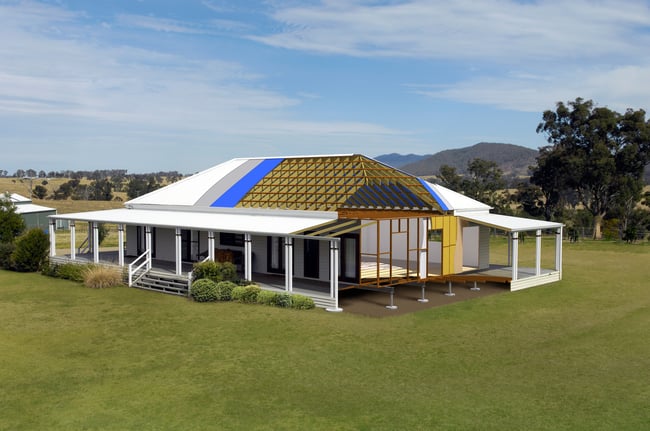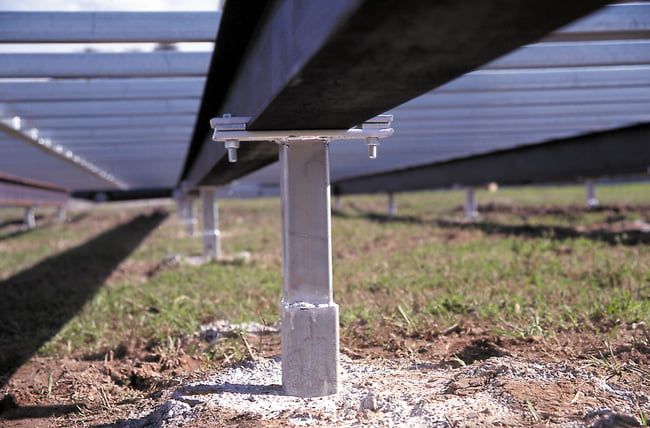|
Once you’ve signed your building contract with Manor, our construction process begins. We build the home in our secure factory, a process which generally takes around 4-6 weeks depending on the size and level of inclusions chosen. We then split the home into modules and deliver them direct to your property, where we’ve already installed the piers and footings, ready for installation. Once the modules are in place we then apply the finishing touches, including painting, plus any garages, verandahs and decks. But have you ever thought about where your new house will sit? The foundations might not seem like the most pressing issue but are critical to a strong, long lasting house, and some options are more suited to different site conditions than others. Here we’ll take a look at piers and footings in a bit more detail: Standard Frames and Footings: Our standard footings use a combination of Engineer designed concrete footings, into which galvanised steel piers are inserted to create an extremely durable and solid base. The galvanised piers affix to the heavy-duty underfloor chassis, specified in excess of N3 wind rating, so you know that your home is safe in even the most extreme of conditions. RHS Durugal steel floor joists are added onto the chassis so that you know your new home has the most solid base possible. These high-quality materials allow us to make sure that every house we build is secure and durable – giving you a home that will stay standing long into the future. Our standard frames and footings are ideal for most sites; however we can also make sure your home is secure and safe even on restricted sites.
Sloping Sites: The environment in which you are building can affect the requirements you may need for the base of your home. When building on sloped sites more than 700mm from the ground, we can tailor the length of the steel pier inserts to give the elevation needed for a flat and even building surface. It also allows for the use of cross-bracing on the chassis that is required for elevated homes. By combating a slope in this way, the resulting look can be more aesthetically pleasing than brick piers, as our pier system can allow for perimeter skirting boards to disguise any gaps. You can read more about building on a sloping site here. Flood Prone Areas: Raised piers are also used in areas prone to flooding, to allow for clearance under the home so that water can flow through without getting trapped. Raising the height of your home helps prevent flood water from reaching the inside of your home, and the increased drainage can stop damage to your flooring from standing water. Coastal Conditions: Your location can also have a say on what type of system you use. Building near the coast, concrete block piers are required to combat the corrosion from the coastal elements and keep your home solid over many years. Piers vs Concrete slab There are several benefits for using pier systems on top of the suitability for most sites. Having an elevated base helps to regulate the temperature of your home by allowing air to flow underneath, aiding in keeping it cool in hot conditions and acting as an insulating buffer in cooler ones. Concrete slabs can also be hard and unforgiving under foot, where as a pier system provides more comfort for day to day living. There are also some great practical advantages to a pier system – it makes accessing pipes under your home much easier, allowing access for essential maintenance. So if anything ever needs repairing, or you are making additions, the work is much easier as getting under the home for replacement and fitting does not require digging or special equipment. Another advantage of piers over concrete slabs is if you are building on reactive soils, we offer adjustable pier systems that allow you to fine tune your home’s height. That way if the soil and landscape under your home change over time, we have the ability to adjust the piers to keep it level, while still being firmly and securely attached to your footings. Our piers and footings suit almost any site, and the best part is your site works can commence while your home is being built in our factory, saving precious time and allowing you to be in your new home sooner!
If you’re curious, you can read more about how our homes are transported and installed here or give us a call and make your dream home your reality.
|
On solid ground
July 02, 2021 /
Modular Building,
Modular Construction,
Modular Homes,
Building Process





